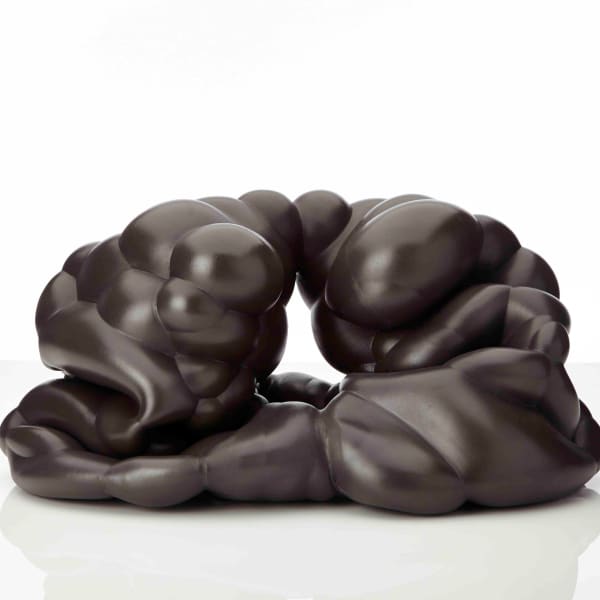John Rainey | Flayground
Flayground is a collection of new and retrospective work by John Rainey. His most recent sculptures, which form the core of Flayground, are a series of variations of the Doryphoros by the Ancient Greek master sculptor Polykleitos. Polyskeitos's bronze original is long lost; and so Rainey's sculptures are informed by later Roman marble copies, or even later plaster casts. They are copies copying other copies: manufactured fragments featuring faux breakage and cloned limbs, held upright by structures reminiscent of museum displays (or playgrounds).
Rainey created this work following a six-month fellowship at the British School at Rome, where he cast his net of interest in "the copy" wide, to draw on sources ranging from the film sets of Cinecittà ('Cinema City') and the excavated bodies at Pompeii, to the flayed skin of St. Bartholomew in Michelangelo's "The Last Judgement". The skins that adorn Rainey's Doryphorus copies – pushed up, pulled down or removed entirely – reveal that the figures are bound in a system of pretending to be something other. They exaggerate the imitation that lies at the heart of the copy.
In the initial section of Flayground, similar themes are traced through Rainey's work over the last eight years. Much of this work was inspired by our move to the virtual world; by our second selves presented on online platforms. There is a detectable preoccupation with things being not as they seem, and a co-option of familiar forms (often with classical reference) into a matrix of illusion, disruption and stress. Materials are coaxed into behaving or appearing in ways that disrupt our expectations: porcelain masquerades as silicone, silicone as porcelain, and forms that we recognize as decorative and static mutate and sprout bodily appendages. These are objects that hint at the plasticity of digital culture and its ability to challenge the natural order of things – alien, yet remaining familiar enough to unsettle.









